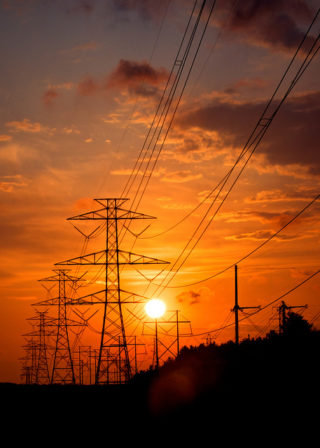Everyone hates paying for something that they don’t use (how
many cable channels do you have?). In California, local electricity customers
may finally get satisfaction about paying for the transmission grid capacity
that they don’t use.
At issue is an obscure pricing mechanism known as Transmission Access Charges.
These charges are meant to capture the cost of delivering power to customers,
but the fees don’t distinguish between distant or local energy sources. So a
customer pays a transmission fee on all the power they consume, whether it was
produced next door or 500 miles away.
With this problematic pricing mechanism, the charges don’t
decline when a customer’s on-site or nearby power generation increases, even
though such distributed power generation doesn’t use the greater transmission
system. The fees are substantial, adding as much as 3¢ per kilowatt-hour to the
cost of distributed energy. Plus, the more Californians install solar technology
and reduce demand for long-distance power transmission, the less these charges
make any sense.
Getting Traction for Fair Pricing
Beginning in 2009, Southern California’s Clean Coalition
began fighting the economic disparity between transmission use and transmission
costs, and the seven-year campaign has finally garnered the attention of the
Golden State’s transmission manager, or Independent System Operator, CAISO. For
the first time, the system operator is inviting stakeholder comments on
the issue.
Instead of basing access charges on the amount of
electricity a customer consumes (end-use metered customer load [EUML]), the
Clean Coalition proposes that California utilities derive transmission
assessments on Transmission Energy Downflow (TED), a measure of how much
electricity actually travels on the transmission system to reach the customer.
Switching to this more accurate measure would result in immediate savings for
customers that rely more on distributed energy resources, and it would also
bring about institutional change. In grid planning, the current charge
discriminates against distributed energy projects that can lower grid costs by
delivering power with technology like solar, for example, near demand. The
following graphic illustrates this phenomena.
On the left, a centralized project has a lower bid in the
“least cost best fit” analysis because the system operator is ignoring actual
transmission costs and instead applies the charges to all customers regardless
of their usage. On the right, the fair application of transmission fees means
that the distributed energy project wins along with customers.
Big Savings from Fair Pricing
The fair playing field would reduce demand for unnecessary
and expensive transmission expansion in the long run, saving California
customers as much as 3¢ per kilowatt-hour, an average of about $200 per year.
The reduced demand for transmission would also mean better utilization of
existing grid capacity, more distributed energy (like solar), and fewer fights
over the use of eminent domain to take private land for transmission towers.
Apart from reaping benefits for consumers, the proposed
switch to more accurate transmission pricing would also remove perverse
incentives where investor-owned utilities that are choosing between centralized
and distributed projects are financially rewarded for expanding transmission
infrastructure (by getting a return on their investment for building more
transmission).
Fair and Consistent Pricing
The change to more accurate transmission pricing isn’t
novel. Already, California municipal utilities and others that do not own
transmission lines are billed for transmission access based on actual instead
of aggregate use. Adopting the rule for utilities that own transmission would
advance accounting accuracy and align policy across utility service
territories.
The policy change many also help remedy a national bias
toward transmission building, encouraged by incentives provided by
the Federal Energy Regulatory Commission for transmission expansion, even
when more cost-effective alternatives are not considered.
Transmission Access Charges may be an obscure pricing
concept, but getting it right is a golden opportunity for the Golden State to
use fairer pricing to make the most efficient use of its electric grid.


No comments:
Post a Comment